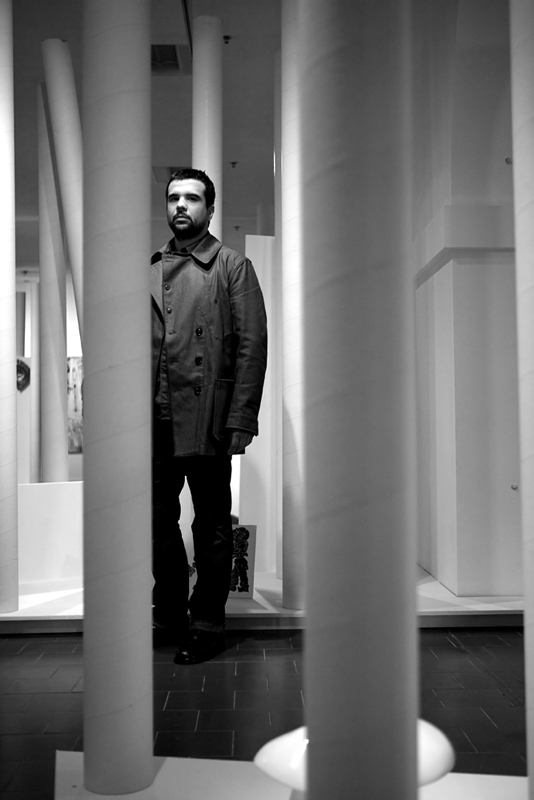
As an architect Apostolos Kalfopoulos has in recent years created bridges between architecture and the arts through a range of different activities, as a curator, a publisher of periodicals and an author of numerous texts. His latest project, the curation of the exhibition «The Beautiful is just the first degree of the Terrible is such a bridge. The exhibition takes place at the Lazariston monastery in Thessaloniki and runs until the 10th of January, 2010 – addressing an issue that really is “playing with fire”. Original works by 25 contemporary Greek artists who interact with a large collection of artifacts from Greek folk art.
As an architect you have curated a series of artists’ exhibitions; what is the relationship between architecture and the arts that has interested you within these exhibitions – and in your writings? I am interested in those moments when art and architecture come close together; these are the moments during which they are called to define, in their own terms, our relationship with the city and culture.
What was it that led you to the exhibition’s theme, «The Beautiful is just the first degree of the Terrible» and what did your research include? I wanted to ask two questions: a) Why are we experiencing this strong resurgence in Romanticism, the Goth aesthetic of baroque and the grotesque? Does it have something to say in the here and now or is it just a clever re-play like for instance the 60s revival of the past? b) Why are Greek artists turning to “movements” of art primarily from the Center-North European area and are there corresponding local expressions which can feed their work? Is there any point in this?
To make this happen I tracked down versions of the terrible as shown in folklore, at traditional Carnival Events, from tales of cannibalism, and narratives from articles describing strange creatures, as well as ‘Karagiozis’ (Greek shadow puppet theatre) which is a local manifestation of the grotesque.
What exactly is the “magic” meaning of the “space in between” within the Greek tradition, making it a place where we discovered the beauty of the Terrible? All these manifestations were ways in which the community dealt with issues relating to the absurd, evil and the ugly, the very otherness.
Almost all of the participating architects, artists, performers and theatrical artists, are part of the same generation, mainly emerging during this decade. Is there another common element within the participants? I do not agree with the use of the term “generation” because in the art world that means something very specific; I’m not sure whether that applies here. Of course, there are commonalities between them and especially their involvement with the respective thematic content. A year ago what I asked the artists to do was create original works, trying to “filter their work” through the material I gave them. Within the exhibition, apart from the works of the acknowledged artists there is also folk art.
Your exhibition is divided into two sections, the Cave and the Forest. What is “hidden” in these two “places of the other”? These two “spaces” are important; on the one hand, because all the outlandish characters (pixies, demons, goblins, ghouls, witches, dragons, etc.) are displaced in the forest and under the earth; on the other, because both relate to the labyrinth, the labyrinth as a place of instincts and the subconscious. Thus, the first floor gives the impression of a dark and underground labyrinth composed of caves and booths, rocks and crystalline forms, while the second creates a sense of over-ground, white forest composed of stands of trees and glades, logs and precious fruit.
Over the last decade in the U.S. and Scandinavia a movement known as the Free Folk movement has blossomed. Would you like – your exhibition aside – to see the Greek “scene” following this path? Indeed, it appears a new subculture that contains elements of the folk introversion of the psychedelic 60s and the 70s and interests surrounding romanticism and naturalism, environmentalism and animism, the residential and the nomadic, the exotic, otherness, manual labour and exchange has emerged. A subculture creates identity and community, and certainly says something about the here and now, however, it relates directly to the cultural industry … This is not far from the questions the exhibition addresses … That’s not to deny that I like Devandra Barnhart, Joanna Newsom or Bat for Lashes, but I always have reservations about anything that creates style, attitudes and deadlocks.




